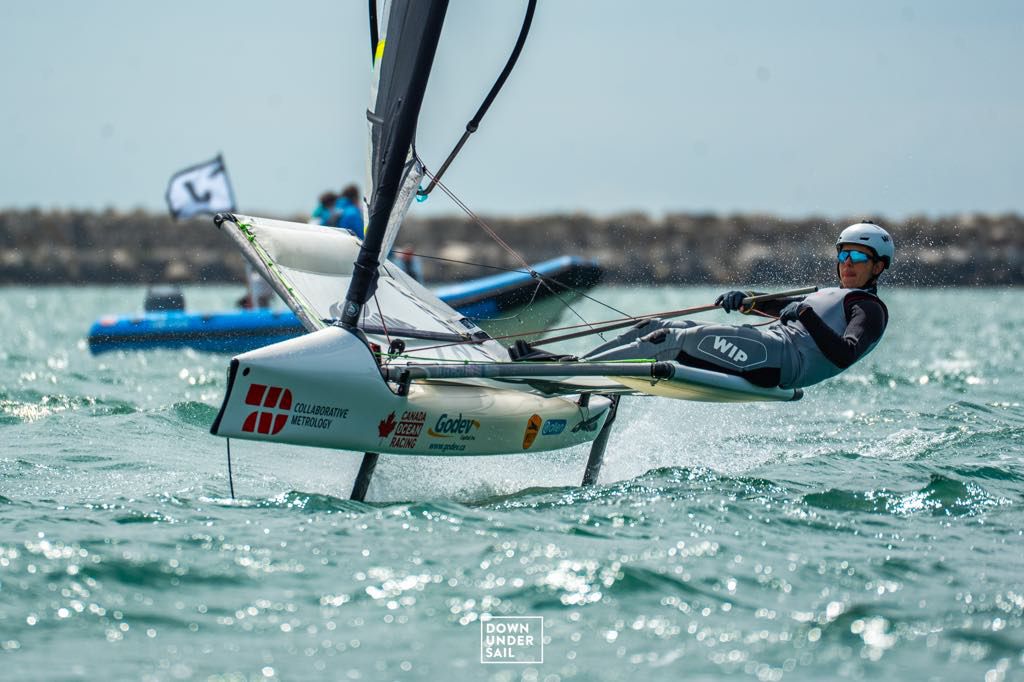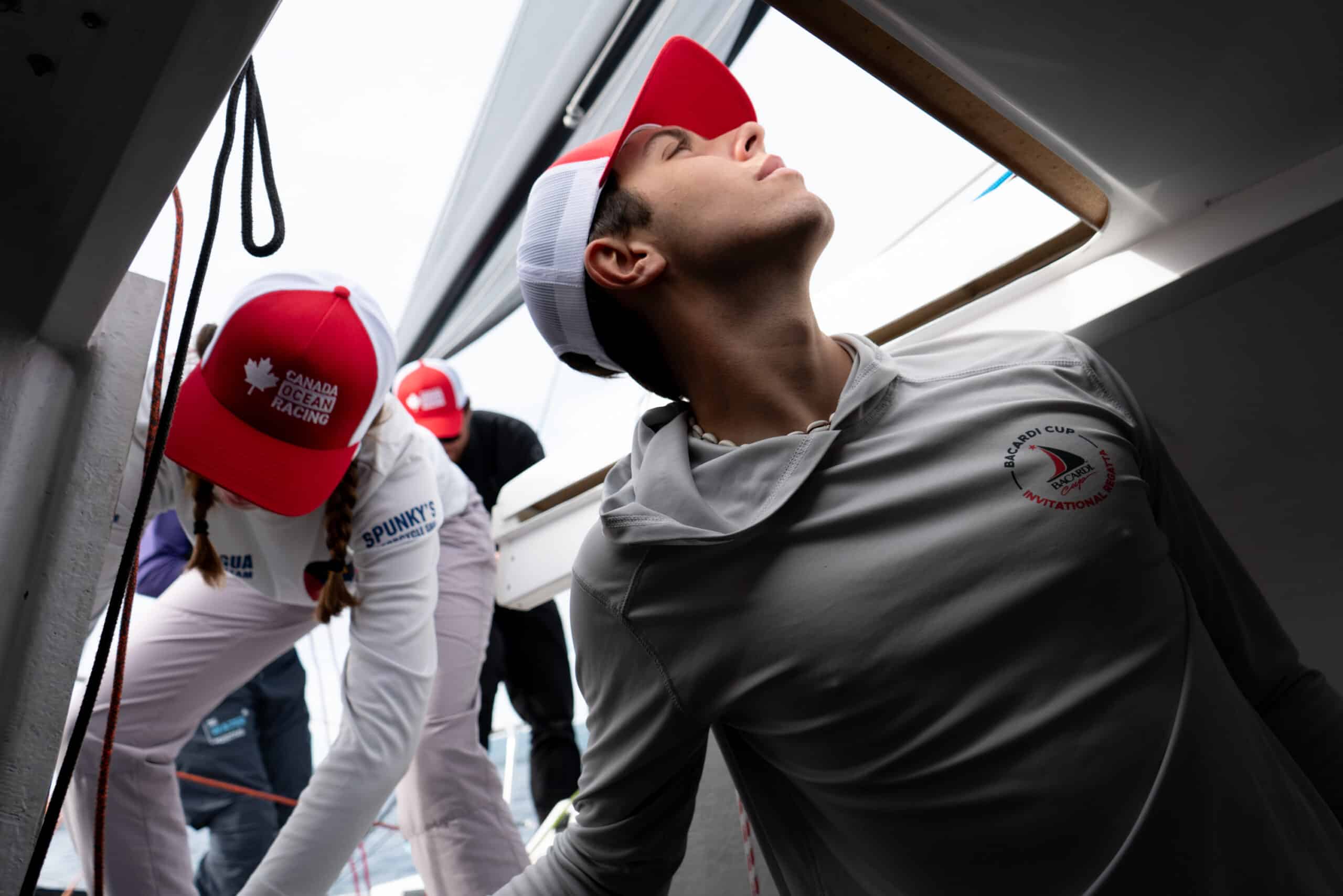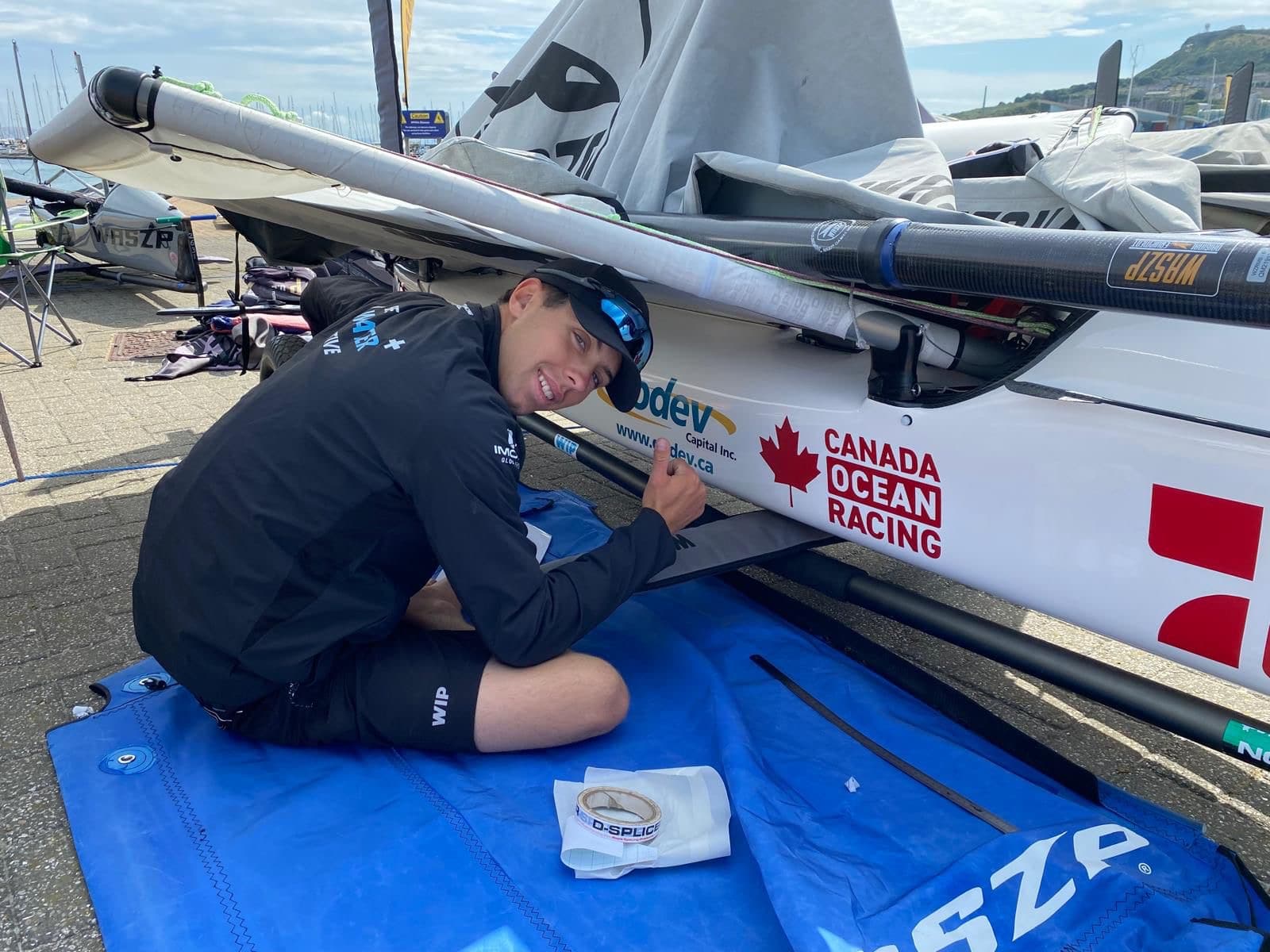
17 Nov Meet our Pathway Programme Sailors: Adrien De Pas
Just over a year ago, we invited applications to join our inaugural Youth Pathway Programme, which is designed to support offshore sailing amongst young Canadians. Out of the 40+ applicants, four made it through, two male and two female. Adrien De Pas was one of them.
Scott Shawyer, president and skipper of Canada Ocean Racing, spent two days with Adrien and three others on a Farr-designed X2 yacht.
“Adrien’s application jumped off the page – his enthusiasm was real and his love of the sea and sailing unquestionable. He had what we were looking for, and over the two days I got to see how genuine his passion was, and I am delighted we could play a small role in supporting Adrien on his journey towards a sailing career.”
In this interview, we learn more about what drives Adrien. We hear about his experience last summer in the WASZP Worlds, and we look ahead to see what the next few years look like.

You were selected as one of the four participants in our inaugural Youth Pathway Programme in September 2024. Can you share what initially motivated you to apply, and what your expectations were going into that first weekend in Collingwood?
I was really excited to see such a strong offshore sailing initiative happening in Canada. In recent years, we have not seen many programs of this scale, so it was inspiring to see the sport grow in that direction. The fact that I could be part of it made it even more exciting. I wanted to learn as much as possible, meet new people, and build connections that might open doors for future offshore opportunities.
Working under the mentorship of Scott Shawyer (who is training toward the Vendée Globe 2028), what were the most valuable lessons or insights you gained, especially regarding preparation for highlevel offshore sailing?
One of the biggest things I took away was the importance of preparation. Scott brings a very structured and professional approach. Everything is planned, organized, and based on what can be controlled before heading offshore. It was also inspiring to see Scott’s perseverance, especially knowing he deals with seasickness. It showed that mindset and determination can take you very far.
The Programme brought together four young sailors and nearly 50 applicants. What stood out about the process and environment during the training? Did it help shape your ambitions or career path in sailing?
From the beginning, it was clear that this program was not about proving yourself but about learning. That made for a really healthy and motivating environment. Everyone was there to grow, and that took off a lot of pressure. It made me feel more confident about pursuing offshore sailing in the future, and being surrounded by mentors like Scott, Nick Moloney, and Ryan Barkley helped confirm that this is a path I want to continue on.
How has your involvement in the Pathway Programme influenced your growth as a sailor—technically, mentally, and within the Canadian offshore sailing community?
I definitely came away with a stronger mindset around preparation and long-term goals. I realized how important it is to take control of every detail before leaving the dock. Mentally, it pushed me to be more structured and confident in my decisions. It also made me feel more connected to the growing offshore sailing scene in Canada, which is exciting to be part of.

WASZP Worlds Experience
You recently competed in the WASZP Worlds. How different was the intensity and dynamics of competing in a high-performance foiling dinghy class compared to the offshore training with Canada Ocean Racing?
Offshore and dinghy sailing have a lot in common, but the way effort is managed is very different. In offshore racing, you need to sustain your energy and focus over several days or even weeks. In foiling dinghy racing, the effort is intense but only for short periods—around 30 minutes at a time. Both require discipline and good preparation, but the rhythm and mindset are not the same at all.
What were the key challenges you faced at the WASZP Worlds—both on and off the water—and how did you prepare mentally and physically for them?
The biggest challenge came before the event itself. I had to raise money with a fundraising campaign and by finding additional sponsors, which took a lot of energy before I could even get to the starting line. Once at the event, I was racing in a fleet of more than 240 boats, which was a first for me. That brought a whole new set of challenges—managing positioning, reacting to other sailors, and staying focused on my own plan. Mentally, I had to block out distractions and keep things simple.
Did anything from your experience with Canada Ocean Racing—teamwork, technique, mindset—carry over into your approach?
Absolutely. Offshore racing taught me that most of the work happens before the race starts. I brought that same mindset into the WASZP Worlds. I spent the most time making sure my boat was perfectly prepared to avoid any breakages and making sure it was as fast as possible! That came directly from what I learned through Canada Ocean Racing—control what you can, before you hit the water.
Representing Canada & Looking Ahead
What does representing Canada mean to you, especially as part of a programme designed to grow offshore sailing in Canada? How does that shape your motivations or future goals?
Canada has often been seen as an underdog on the international sailing scene. It is not as deeply rooted in our culture as it is in places like France or the UK. So being part of a project as inspiring and well-structured as Canada Ocean Racing is really motivating. I feel proud to represent Canada, and I hope I can one day contribute to its growth and presence in the offshore sailing world. Being part of something bigger, something that aims to develop the sport in our country, really pushes me to work harder and think long term.
Canada Ocean Racing’s initiative is closely linked to its Be Water Positive message—combining sport with environmental purpose. How much has sustainability factored into your sailing journey, and how do you see sport and advocacy intersecting?
Sailing puts us in direct contact with nature, especially the ocean. That connection makes it our responsibility to protect it. I believe every sailor should be aware of the impact we have and use our platform to speak up for the environment.
So far, I have mostly approached this from a personal level, making conscious choices in how I run my campaign and trying to reduce my environmental footprint. But in the future, I would love to take that further and use sailing as a way to carry a stronger environmental message. Racing just for the sake of racing is one thing, but today it is more important than ever to have a message that goes beyond yourself. That is why I love the Be Water Positive initiative. It should be the standard.

Looking ahead: do you plan to continue racing in foiling classes or more offshore campaigns?
I am still focused on my WASZP project, which, as of right now, is planned for two more years, including two more World Championships. That is still a big part of my goals. As for offshore sailing, it is clearly something that interests me, and I would love to do more of it in the future. I am not sure yet what the next steps will look like, but I want to keep growing as a sailor and stay open to both paths.
Do you have other projects or competitions lined up for the next twelve months?
Running your own sailing campaign involves much more than just time on the water. It takes a lot of planning, physical training, logistics, and fundraising. While the next world championship is in Florida, in March, remain my priority, I also want to get on as many boats as I can. Inshore or offshore, bring it on! So yes, the next year will be busy.
Outside of sailing, what fuels your passion—any hobbies, studies, or pursuits that complement your time on the water?
Outside of sailing, I am really passionate about sports in general. I enjoy climbing, snowboarding, and spending time in nature. I am also a part-time student, and I try to keep learning and growing outside of the sport. I find that staying active and curious in different areas helps me stay sharp and balanced as a sailor.
What does success look like to you—not just in terms of race results, but personal milestones or impact?
For me, success goes beyond results. Of course, I want to perform, but first of all, I want to have a positive impact. That means helping make high-level sailing more accessible, and carrying a message that matters—like protecting the environment. As athletes, it is easy to focus only on outcomes, but in the end, it is also about bringing people along for the journey and using your platform to do something meaningful.

